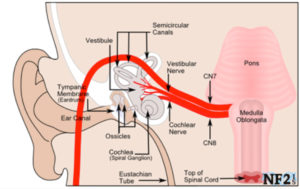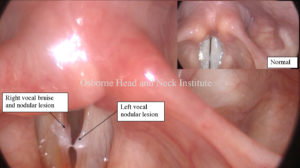- Question: How do the ingredients in e-cigarettes and vaporizers affect respiratory health? - August 16, 2019
- Bad Technique and Vocal Injury - January 9, 2019
- Is Edible Marijuana Dangerous for the Voice? Myths Dispelled - December 18, 2018
- Surprise! You have a hemorrhage - January 31, 2018
- Graves’ Disease: Treatment Overview - September 25, 2017
- Adele and the Stigma of Vocal Injury - July 11, 2017
- Vocal Curbside Consult: How does the thyroid affect the voice? - May 16, 2017
- Vocal Curbside Consult: How do hormones affect the voice? - May 3, 2017
- Vocal Curbside Consult: How do emotion and stress affect the voice? - April 17, 2017
- Vocal Curbside Consult: Vocal Recovery After Illness - April 7, 2017
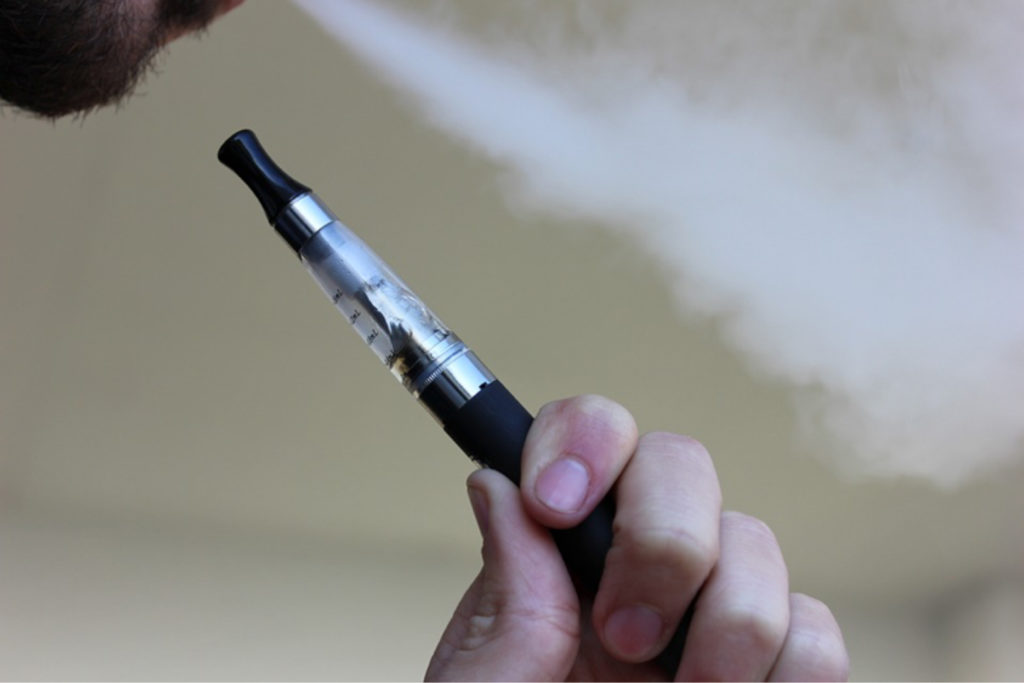
The e-cigarette industry has rapidly grown within the US in the last several years. E-cigarettes were created as an attempt to wean people off of traditional cigarettes while still providing people with nicotine. This concept seems ideal because people believe they can consume nicotine while bypassing the side effects of smoking a cigarette, which includes tooth decay, loss of senses (smell, taste), and various forms of cancer. However, people may not recognize that vaping results in exposure to various chemicals that differ from cigarettes. Because vaping is relatively new, there is limited research on how it affects the human body. To help answer the question about the impact of vaping on respiratory health, we can start by considering the chemicals that are consumed.
What are the most common ingredients?
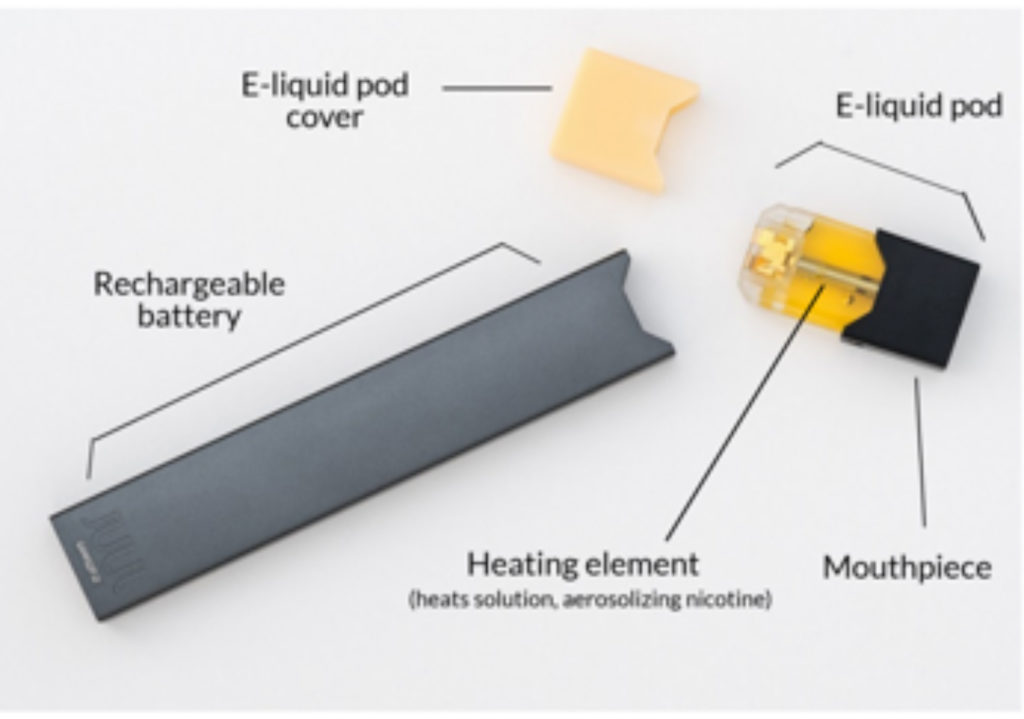
The basic ingredients in the e-liquid that are inhaled are propylene glycol, vegetable glycerin, and nicotine. Depending on the flavoring, e-liquids contain many other chemicals that are specific to the artificial taste the company is trying to create. An important fact to remember when examining the ingredients is that the chemicals go through pyrolysis and endothermic reactions when turned into vapor because of the heating component. These chemicals in aerosol form will have different effects than in liquid form.
Propylene Glycol:
Propylene glycol is an organic compound that lacks color and smell and is found in some food, skin care, and steam products. It could be assumed that propylene glycol is safe because it is found in so many products, but traditionally it has been used in small doses and is not vaporized for inhalation. Studies have been done that provide insight on the possible effects inhaled propylene glycol could have on humans.
One experiment used rats to test the effects of nasal inhalation of propylene glycol over a 90 day period. The results found that there was an increase in mucin in pre-existing goblet cells or the increase of goblet cells in the nasal cavity. Goblet cells are responsible for mucus secretion, but too much mucus is undesirable. In addition, exposure caused epistaxis (nosebleeds) and discharge from the eye, most likely due to the dehydration of the nostrils and eyes.1
In another study, people working with theatrical smoke containing propylene glycol were monitored and examined after two years. The results show that the employees that had longer exposures developed chronic wheezing and chest tightness and their overall lung function decreased . For those who were acutely exposed to the fog, they developed temporary cough and dry throat. It is stated that the most efficient way of reducing these symptoms is elimination of exposure when possible.2
Vegetable Glycerin:
Vegetable glycerin, also known as glycerol, is a compound that lacks color and smell, tastes sweet, and is non-toxic. It is commonly used in cosmetics, drugs, and food and is generally a “safe” chemical for human use. Research shows that glycerol can be helpful by moisturizing skin and improving dehydration, but these benefits are derived from glycerol being consumed in a solid or liquid fashion, not an inhaled, vaporized form.
In an experiment studying the effects of aerosolized glycerol on rats, they were tested for toxicity from inhalation after 2 week and 13 weeks. The findings showed that the rats formed squamous metaplasia of the epiglottis, which is a change of the epithelium. This information shows that glycerol alters the original cells which may trigger further changes and, one could hypothesize, a starting point for cancerous changes.3
Nicotine:
Nicotine is extracted from tobacco and is highly addictive, contributing to serious physical and mental withdrawal symptoms when trying to taper off or stop use. One might be most familiar with this e-liquid ingredient because it is most well known for being the main component in traditional cigarettes. There is a collection of scientific evidence that proves how harmful smoking is, especially to the respiratory system and emphasizes that abstaining from use is safer for people. The best predictor of how vaping will affect the respiratory health is examining the effects of cigarettes.
Research shows that smoking causes damage to the alveoli (balloon like air sacs in the lungs which allow for the exchange of oxygen and carbon dioxide) making someone more susceptible to a plethora of problems. Chronic Obstructive Pulmonary Disease (COPD), which is a large category describing lung disease, is commonly seen in smoking patients, specifically emphysema and bronchitis.
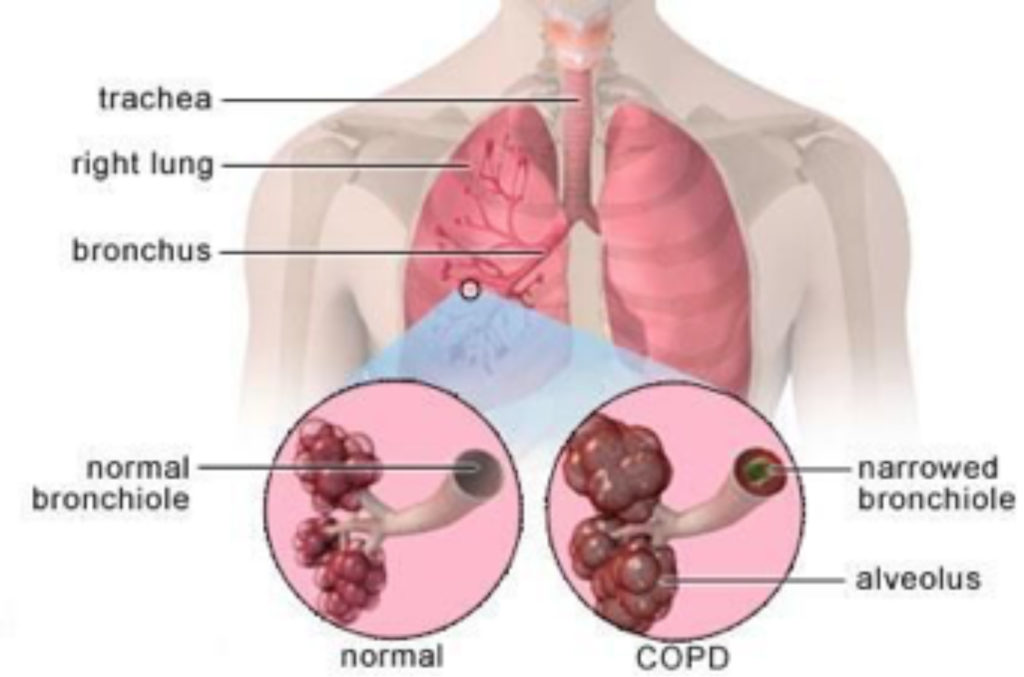
In addition, smoking is known to cause cancers of the lung, larynx, and mouth, among other sites. There are many other side effects to smoking including laryngitis, hoarseness, loss of taste and smell, and bad breath that all negatively affect one’s life.
Other Known Chemicals:
A chemical found in some e-liquids is diacetyl, which is an organic compound that gives a buttery-like flavor. A study performed on rats shows that diacetyl had a negative effect causing epithelial necrosis (death of epithelial cells) as well as suppurative to fibrinosuppurative inflammation in the nose, larynx, trachea, and bronchi.4 In addition, diacetyl is most known for generating bronchiolitis obliterans, familiarly known as popcorn lung. This condition damages the lungs’ smallest airways, leading to breathing problems which eventually could result in death.
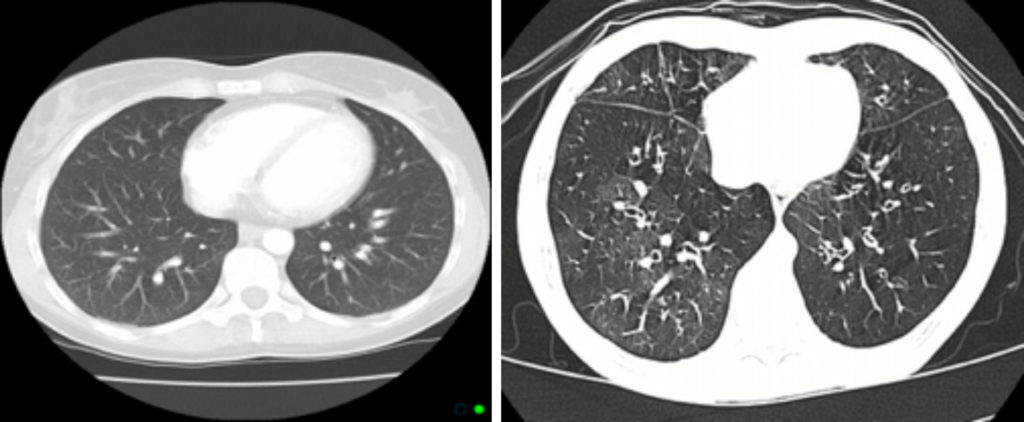
Lastly, another hazardous chemical found in some e-liquids is the organic molecule formaldehyde. It is in many wood products and is used to preserve specimens in labs, but it is classified as a “probable human carcinogen.” Repeated inhalation of formaldehyde makes cause susceptibility for spontaneous cell change leading to tumor growth.
What does all this information mean?
Each chemical in e-liquids appears harmful enough in isolation, but the combination and then vaporization makes this even more concerning. From the research, it can be hypothesized that vaping will provoke irritation to the mouth, throat, and airway. This irritation can manifest with coughing, itchiness, sore throat, and dry mouth.
It can also be assumed that repeated vaping has more serious effects and the consequences can be worsened with longer exposure. One main concern is that vaping leads to squamous metaplasia which shows that the aerosol is causing a change in the normal cell structure . Cellular change brings up the possibility of cancer, given that cancer is the change in cells leading to abnormal cell growth and proliferation. It can be hypothesized that people who vape are more susceptible to malignant tumor growth, and the above information certainly suggests the need for more research.
The other main concern is the damage to the lungs and respiratory tract. In theory, vaping will generate similar respiratory problems to smoking such as COPD, bronchitis, and emphysema and some flavorings will cause popcorn lung, both due to the constant intake of vapor damaging the body’s air passages and alveoli. These conditions can be serious leading to chronic, irreversible damage and possibly death.
It is also essential to understand that since the vast majority of e-liquids contain nicotine, vaping is just as addictive as smoking a cigarette
Studies have already shown that vaping is not definitively a “safer and healthier” alternative to smoking and seem to result in health complications that may be equivalent to traditional cigarettes.
References
-
Suber, Robert L., et al. “Subchronic Nose-Only Inhalation Study of Propylene Glycol in Sprague-Dawley Rats.” Food and Chemical Toxicology, doi:10.3897/bdj.4.e7720.figure2f.
-
Varughese, Sunil, et al. “Effects of Theatrical Smokes and Fogs on Respiratory Health in the Entertainment Industry.” American Journal of Industrial Medicine, vol. 47, no. 5, 2005, pp. 411–418., doi:10.1002/ajim.20151.
-
Renne, R. A., et al. “2-Week and 13-Week Inhalation Studies of Aerosolized Glycerol in Rats.” Inhalation Toxicology, vol. 4, no. 2, 1992, pp. 95–111., doi:10.3109/08958379209145307.
-
Hubbs, Ann F., et al. “Respiratory Toxicologic Pathology of Inhaled Diacetyl in Sprague-Dawley Rats.” Toxicologic Pathology, vol. 36, no. 2, 2008, pp. 330–344., doi:10.1177/0192623307312694.


